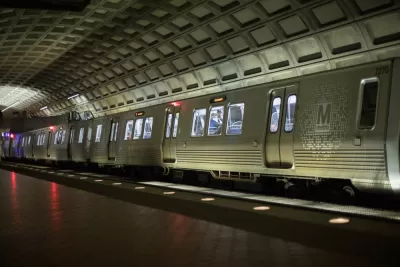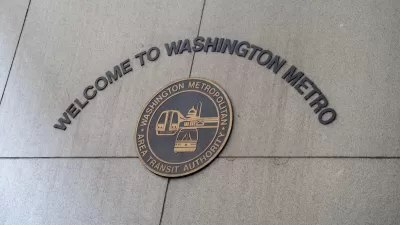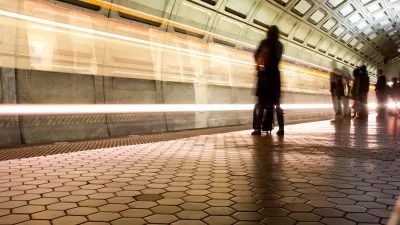Trains will arrive at shorter intervals during rush hours on the line’s busiest days.

Commuters in the Washington, D.C. area will see shorter headways on the well-used Red Line train. As Abigail Constantino reports for WTOP, “Trains will operate every eight minutes all day Tuesdays, Wednesdays and Thursdays, which have become Metro’s highest ridership days, the transit agency said in a news release.” Red Line trains will continue to operate every eight minutes at rush hour and every 10 minutes the rest of the day on Mondays and Fridays.
Like other transit agencies, Metro has been dealing with an operator shortage, problems with its 7000-series trains, which put many of them out of service, as well as a dispute over operator training. Last January, the Metrorail Safety Commission “discovered that Metro was ‘deliberately ignoring’ its own training standards, allowing operators to skip a required eight hours of initial hands-on training overseen by instructors on out-of-service trains.” Metro was later able to make an agreement with the commission that prevented it from having to reduce service by providing operators with the required additional training.
As a TransitCenter blog post recently outlined, the District’s transit recovery after the disruptions brought on by the Covid-19 pandemic has been halting, with ridership remaining below pre-pandemic levels and service reaching fewer jobs in the region than before.
FULL STORY: Red Line service increasing on Metro’s busiest days of the week

Trump Administration Could Effectively End Housing Voucher Program
Federal officials are eyeing major cuts to the Section 8 program that helps millions of low-income households pay rent.

Planetizen Federal Action Tracker
A weekly monitor of how Trump’s orders and actions are impacting planners and planning in America.

Ken Jennings Launches Transit Web Series
The Jeopardy champ wants you to ride public transit.

Rebuilding Smarter: How LA County Is Guiding Fire-Ravaged Communities Toward Resilience
Los Angeles County is leading a coordinated effort to help fire-impacted communities rebuild with resilience by providing recovery resources, promoting fire-wise design, and aligning reconstruction with broader sustainability and climate goals.

When Borders Blur: Regional Collaboration in Action
As regional challenges outgrow city boundaries, “When Borders Blur” explores how cross-jurisdictional collaboration can drive smarter, more resilient urban planning, sharing real-world lessons from thriving partnerships across North America.

Philadelphia Is Expanding its Network of Roundabouts
Roundabouts are widely shown to decrease traffic speed, reduce congestion, and improve efficiency.
Urban Design for Planners 1: Software Tools
This six-course series explores essential urban design concepts using open source software and equips planners with the tools they need to participate fully in the urban design process.
Planning for Universal Design
Learn the tools for implementing Universal Design in planning regulations.
Ada County Highway District
Clanton & Associates, Inc.
Jessamine County Fiscal Court
Institute for Housing and Urban Development Studies (IHS)
City of Grandview
Harvard GSD Executive Education
Toledo-Lucas County Plan Commissions
Salt Lake City
NYU Wagner Graduate School of Public Service





























